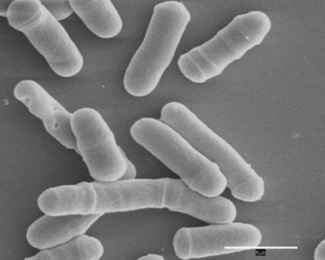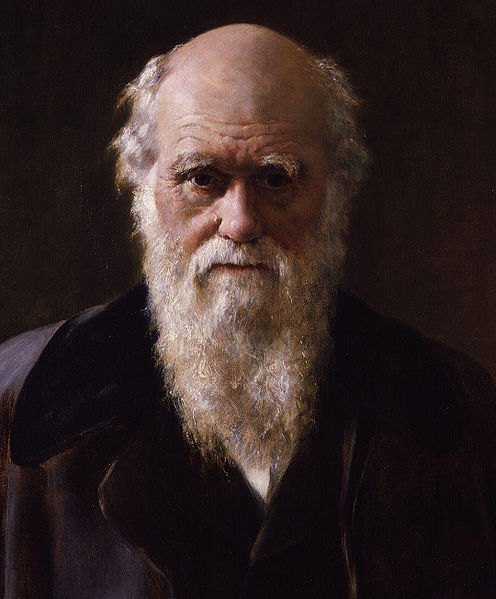In his outstanding volume The Art of Fermentation, Sandor Ellix Katz makes the disturbing proposition that rather than us having domesticated Saccharomyces cerevisiae – the yeast used to ferment wine as well as (most) beer and bread – S. cerevisiae has instead domesticated us. Katz is a fermentation wizard, the author of several books on recapturing the practice of home fermentation, and possibly fermentation’s first popular activist, not to mention one of my personal heroes. It’s fair to say that yeasts are his friends. He’s echoing a claim Michael Pollan made first, and maybe both personalities are a bit radical. Even so, this claim isn’t. Let me explain.
Humans have probably had a relationship with S. cerevisiae since cave-folk days; after all, we know that animals deliberately seek out and enjoy fermented fruit and early humans surely would have observed and adopted the trick. But drinking alcohol – or eating naturally fermented fruit – requires the machinery to break it down. Humans have that machinery: alcohol dehydrogenase first degrades ethanol into acetaldehyde, and then aldehyde dehydrogenase must degrade the also-toxic acetaldehyde into acetate, which then degrades to carbon dioxide and water. Other enzymes do help metabolize alcohol. You’ve likely heard of cytochrome p450, a secondary alcohol-processing enzyme that also detoxifies ibuprofen and is the reason why chronic heavy drinkers shouldn’t take Advil. The dehydrogenase pathway, nonetheless, is crucial.
This is a pretty specialized pathway, and it’s not the same in everyone. Some people – especially members of Chinese, Japanese, and Korean populations – have an extremely efficient version of alcohol dehydrogenase that generates lots of acetaldehyde, which then sits around waiting for the aldehyde dehydrogenase to catch up. The resulting acetaldehyde overload yields an unpleasant physical response most of us recognize: a red face, nausea, racing heart, and sweating. People who experience these effects after just one drink often avoid alcohol altogether because it’s so unpleasant. Today, that can be a disadvantage at a party. 100,000 years ago, it might have been a more significant problem for hunter-gatherers with fluctuating food sources when fermenting fruit was the plat du jour. It’s not unreasonable to imagine that cave-folk with efficient alcohol metabolizing apparatus had an advantage over those who couldn’t deal with the stuff at all (or who died finding out that drunkenness didn’t agree with them).
Michael Pollan conjectures – though “conjecture” suggests more speciousness than might be appropriate given Pollan’s reputation – that humans and the plants we use for food (and other things) have “coevolved” with each other. Humans become more and more capable of digesting what an available and tasty plant offers, while plants that offer us what we find most desirable are the most successful because they’re the ones we deliberately cultivate and care for. As Pollan puts it, “We automatically think of domestication as something we do to other species, but it makes just as much sense to think of it as something certain plants and animals have done to us, a clever evolutionary strategy for advancing their own interests. The species that have spent the last ten thousand or so years figuring out how best to feed, heal, clothe, intoxicate, and otherwise delight us have made themselves some of nature’s greatest success stories”. We select for the things we like best, and the things we like best consequently survive best. Domesticated wheat, rice, corn, apples…these are among the most successful species on the planet by the numbers.
The same is true of our old friend S. cerevisae. As much as it serves our purposes in wine and beer and bread, any winemaker or keeper of a sourdough starter can attest that we put a lot of time and effort into serving it. About 600,000 tons of baking yeast is produced each year, and that number doesn’t even include yeast produced for the fermentation industry. It might be foolishly anthropomorphic to suggest that yeast changes itself to make us happy; new variations arise by chance genetic mutations, not through some kind of deliberate response. And yet, only yeast with genetic mutations that survive in the conditions we provide will be alive, in the right place, in the right time, long enough for us to discover them. And only yeast with mutations that do something we like will be picked up and propagated en masse instead of being weeded out as undesirable. This probably doesn’t bother you. Unless you, like me, stay up at night worrying about microbial genetic diversity, but not many people are like me.
Even though winemakers have dozens of commercial yeast options, and even though support for spontaneous fermentation is strong and growing stronger, yeast diversity isn’t really what we’re after as a culture. Winemakers want S. cerevisiae to do a specific job. Most of them look to scientists for help. Scientists look for useful variations, and they find that S. cerevisiae rises to the occasion. These new yeasts aren’t genetically modified organisms (GMO’s) (I’m not discussing those today, though I did in a previous column.) Sometimes new yeast varieties are the product of mutations that arise spontaneously, all on their own, to be discovered in someone’s cellar or vineyard. More often, they’re deliberately bred by a lab or a company in the same way that we’ve been breeding everything from tulips to dogs for centuries: by mating desirable individuals with each other until a generation produces individuals with specific desirable characteristics.
Advances in molecular genetics have made this process much faster and more efficient because we can examine individuals for whether their genomes contain a genetic sequence associated with the desirable characteristic rather than having to wait until we can see the characteristic itself. In other words, if we’re trying to develop a yeast with an especially high alcohol tolerance, we can look for genetic sequences that we know are associated with high alcohol tolerance rather than taking the time to grow every yeast offspring in a test tube. Of course, the prospective 17%-tolerant yeast still needs to be test-driven in some 17% wine, but we can arrive at the top candidates without going to all of that fuss and bother. Everything we know about the S. cerevisiae genome is even on-line in the Saccharomyces Genome Database. Between the demand for new yeast options generated by the wine industry and the relative ease of doing yeast genetic analysis (don’t get me wrong – this is still hard – but it’s much easier today than it’s ever been), winemaker’s options won’t stop growing any time soon. Even so, we’re still selecting for a very few yeast varieties. We’re putting our support behind the yeasts with potential to be world powers, collaborating with the strong to make them stronger at the expense of biodiversity.
I’m worried about biodiversity because when we select for microorganisms that are fast-growing, strong, and resilient, those bugs invariably escape into wild settings and dominate, possibly bullying out other less-powerful but ecologically important variants. Those as-yet-undiscovered variants might be the repository for some characteristic we could really use or appreciate, but we’ll never have the opportunity to find them if our laboratory-generated super-yeast outcompete them. Instead of a community in which lots of fairly evenly balanced yeast variants harmoniously coexist, we’ll have something that looks more like a monoculture of the one “best” yeast. Imagine a meadow of wild flowers and weeds being replaced by a field of hard red wheat. This is part of why “natural wine” and “wild fermentation” are slippery terms. We’ve been collaborating and coevolving with Saccharomyces cerivisiae for at least 7,000 years (according to archeological findings from both present-day Georgia and China)source. Even if we’ve only been packaging and selling our favorites since 1965 (the year Red Star sold the first active dry yeast for winemaking), winemaking practices have been influencing yeast survival for millennia. No yeast that finds its way into a winemaker’s vat, in this age, has been untouched by human domestication. Microbiologists are sifting through S. cerevisiae isolated from spontaneous fermentations all over the wine-making world to look for previously undiscovered yeast with useful qualities – like a giant yeast talent search – but we may be too late.
Competition is a good thing. It makes the best better. The best yeast varieties ensnare us into replicating them, and we end up with better wine. It’s symbiotic domestication: we give up a bit of our time and money to take care of the yeast, and the yeast do tasty work for us. But what if we’re letting the strongest persuade us to act in their favor at the expense of listening to all of the voices involved or considering long-term environmental policy? Where’s the balance of power here?
[author] [author_image timthumb=’on’]http://palatepress.com/wp-content/uploads/2010/07/yoga-headshot-2010-thumb.jpg[/author_image] [author_info]Erika Szymanski was blessed with parents who taught her that wine was part of a good meal, who believed that well-behaved children belonged in tasting rooms with their parents, and who had way too many books. Averting a mid-life crisis in advance, she recently returned to her native Pacific Northwest to study for a PhD in microbial enology at Washington State University. Her goal, apart from someday having goats, is melding a winery job to research on how to improve the success rate of spontaneous ferments. When tending her Brettanomyces leaves enough time, her blog Wine-o-scope keeps notes on why being a wine geek is fun.[/author_info] [/author]


